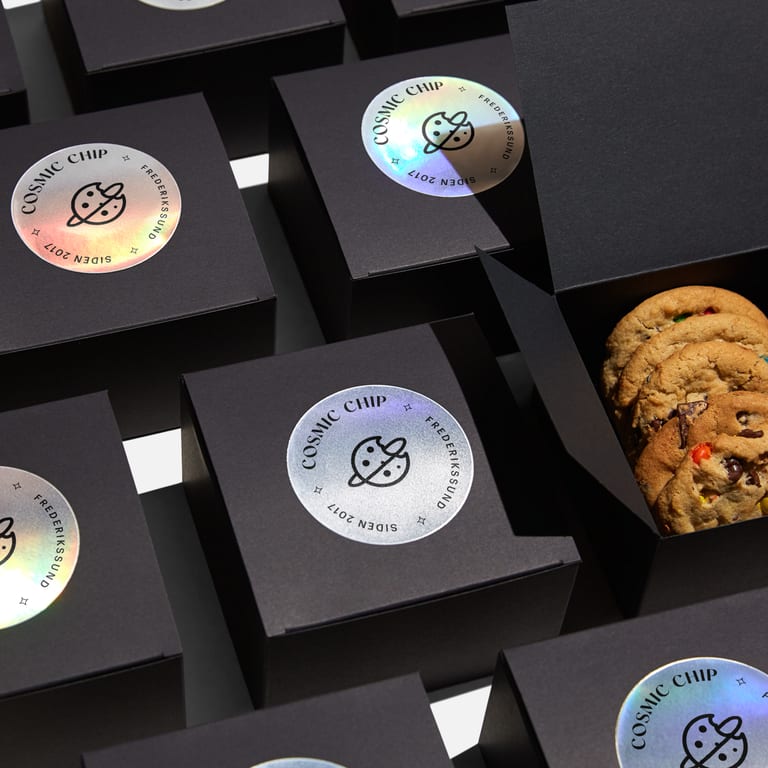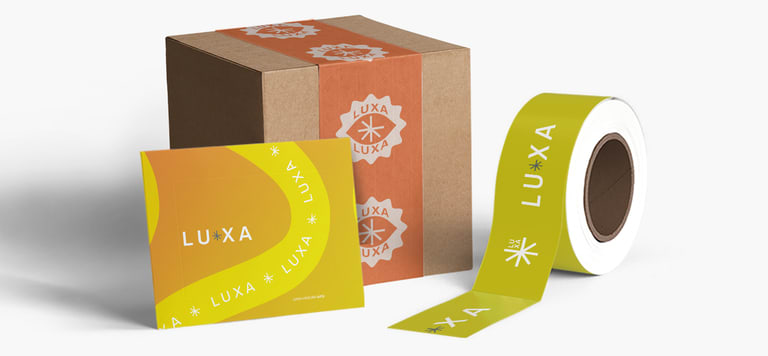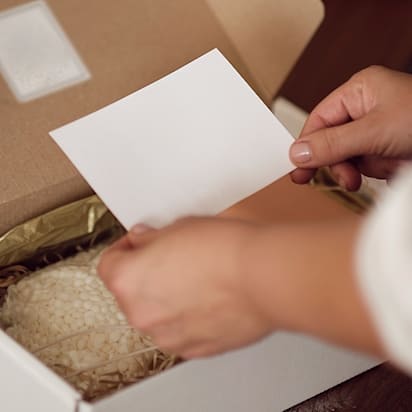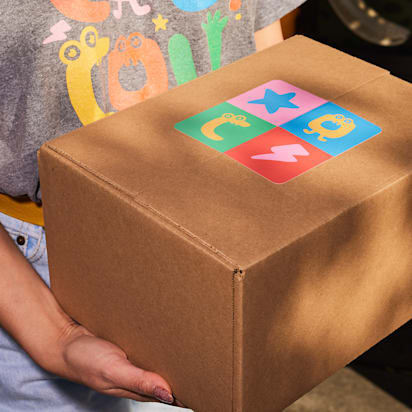If you’re a small business owner, you know profitability matters. One way you can make sure your spending doesn’t harm your bottom line is by understanding the variable costs of packaging to see where you can make savings. So, how do you figure out how much to budget for packaging? In this article, we’ll walk through the price breakdown of packaging costs to help you better understand and work out the cost of your packaging. This guide will provide a straightforward rundown of the main categories that contribute to packaging expenses, from the cost of materials to custom printing costs.
- Packaging supports product presentation, brand identity, customer experience and shipping safety.
- Breaking down packaging costs by the cost of materials, production, customization, shipping, volume and storage helps stay on top of your packaging budget.
- Eco-friendly materials are increasingly popular and can attract consumers who value sustainability.
Understanding packaging costs
Packaging impacts both brand perception and your bottom line. From a raw corrugated sheet or plain cardboard box to custom printing and packaging using expensive materials, packaging decisions shape customer experience.
And let’s be real, customers these days are used to seeing sleek, branded packaging from big companies. So if you want to level the playing field, even on a smaller scale, your packaging strategy matters. At the same time, your packaging shouldn’t eat up all your profits. That’s why understanding these costs and where they come from can give you a major edge, helping to create cost-effective packaging that leaves an impression.

How much should a small business spend on packaging?
Spend too little, and your packaging might look unprofessional or fail to protect your products. Spend too much, and you’ll erode your profit margins faster than you can say “unboxing video.” The average cost of packaging is anywhere from 10% to 40% of a product’s retail price. But this isn’t a hard-and-fast rule. Your product packaging budget might be bigger if your brand is luxury, relying heavily on the “wow” factor, or if your items require extra protection.
The importance of a cost breakdown
When time and money are limited, packaging with lower unit prices can be tempting. But a price breakdown of packaging costs helps business owners spot hidden fees and find effective ways to save money, whether by ordering in bulk or switching to more affordable packaging options. It also keeps brands from over-ordering expensive materials they don’t need or paying more for shipping due to oversized boxes. This approach can have a significant impact on your bottom line over time.

How to calculate packaging costs
Step 1: Identify all variables
First off, list every possible cost that goes into your packaging, including:
- Raw material costs: e.g. cardboard, plastic cases and biodegradable options
- Customization expenses: custom printing costs, embossing, special finishes, branded tape, stickers
- Shipping fees: based on size, dimensions and weight
- Storage costs: renting space to keep your packaging and shipping supplies
- Production and labor costs: the cost of labor and producing your packaging
Getting granular here helps you avoid surprises. An unexpected fee in one area can mess up your entire packaging cost calculation if you’re not careful.
Step 2: Use a simple calculation formula
The next important step of the process is calculating your costs. Use this straightforward formula:
(Total Cost of All Packaging Factors) ÷ (Total Number of Units) = Cost Per Unit
Don’t forget to tweak this equation for variable costs of packaging vs. fixed costs. For instance, if you pay a one-time design fee for a custom logo, that’s a fixed cost that spreads out across all your units. The cost of materials and shipping, on the other hand, typically vary with order volume.
Step 3: Account for order volume
Buying in bulk can lower your overall packaging cost per unit, but it can also increase your storage and upfront expenses. Think of it as a balancing act: do you have space for large orders of packaging materials or enough product turnover to justify the inventory? Once you have a handle on this, fine-tune your final packaging budget.

Breakdown of packaging costs
Now that you know how to do the math, let’s break down each cost category in more detail. Even though costs can vary by industry, these core elements remain consistent for most small businesses.
Raw materials
The type of materials you use can significantly affect the cost of packaging. Cardboard is a tried-and-true classic, lightweight, recyclable and affordable packaging choice. Plastic case packaging options can provide a slick, durable finish but come with a higher environmental impact.

Biodegradable materials appeal to eco-conscious customers and can set your brand apart. VistaPrint offers a range of sustainable packaging options, including biodegradable plastic pouches and mailers.
Manufacturing and production
Packaging production costs can add up. This includes cutting, molding or shaping the packaging, and any quality checks. If your packaging requires specialized machinery or processes like vacuum forming for custom plastic inserts, factor in those extra manufacturing expenses. Production costs can sometimes be negotiable if you have a higher order volume or a long-term contract with your main suppliers.
Customization and branding
Custom packaging designs, finishes and printing techniques, such as foil stamping or embossing, and additional features like window cutouts or magnetic closures, can level up the unboxing experience and elevate your brand presentation, but they come with a price tag.

Custom packaging design
Because you will need more budget to cover the cost of custom packaging, think about whether your business truly benefits from these touches. If you operate in a market where brand aesthetics are crucial, these costs might pay for themselves in terms of perceived value and customer satisfaction. If your product is more utilitarian, simpler packaging solutions might do just fine, saving you from unnecessary expenses.
Customizing packaging with branded labels, tape and stickers is an easy yet effective way to make your packaging more memorable
Shipping and logistics
The cost to ship your product to customers also needs to be factored into your packaging budget. Carriers often charge based on size or dimensional weight as well as actual weight, especially when shipping domestically versus internationally. If your box is large but lightweight, you might pay for dimensional weight, which can be more expensive than the real weight of the item. On the flip side, if your product is heavy but compact, you may pay less overall.

Optimizing your packaging dimensions and weight can lead to major cost savings. Smaller boxes or flexible mailers might cut costs in half, as long as they still offer enough protection.
Order volume
A frequently asked question is: How does order volume impact packaging costs? The short answer: a lot. Suppliers usually offer better rates when you buy in bulk. You’ll enjoy a lower overall unit cost, but you also need the space (and capital) to handle larger orders. This is why it’s important to forecast your sales accurately. You don’t want to over-purchase and pay extra for storage, but smaller volume orders might mean you miss out on discounts. You’ll want to factor in the impact of potential returns as well.
Storage
Speaking of space, how you store your shipping supplies will affect the price of your packaging. In-house storage might give you more control, but it can also eat up valuable real estate that could be used for production, sales or fulfillment. Balancing order volume with storage costs takes practice.
Third-party logistics (3PL) providers offer to store and manage your packaging, freeing up your workspace. However, you’ll need to pay for their services. For smaller businesses, 3PL can often be more cost-effective, whereas larger companies might opt for dedicated warehouse space.
Choosing packing materials
Let’s circle back to the raw materials you can choose from:
- Cardboard: Classic and cost-effective packaging material with plenty of customization options. Great for brands shipping heavier items that need sturdy protection. For example, mailer boxes.
- Plastic: Often used for items that need to stay dry or have a polished look. Good for lightweight products, but be mindful of the environmental impact. For example, stand-up pouches.
- Biodegradable materials: These can be compostable poly mailers or boxes made of eco-friendly materials. While sometimes more expensive, they attract customers who prioritize sustainability and can help brands to stand out in a crowded market.
Your choice of material will depend on your product type, brand identity, and, of course, your packaging budget. For a packaging comparison between these materials, consider factors like durability, material costs and alignment with your brand values.

The rise of eco-friendly packaging
Sustainability is no longer just a buzzword—it’s a big factor in many customers’ buying decisions. Opting for biodegradable or recycled materials can increase your brand’s appeal, especially if your target audience values eco practices. You might pay a slightly higher packaging cost upfront, but you’ll likely regain this in customer loyalty and brand reputation.
Sustainable packaging can open doors to marketing opportunities—tell followers about your plastic-free shipping or compostable packaging on social media or on the packaging itself.

But remember, not all green packaging solutions are created equal. Ask your supplier for certifications or details about the materials and manufacturing process to ensure you’re offering a product that’s genuinely eco-friendly. When customers see you’re taking the time to do sustainable packaging right, it can elevate your brand identity and set you apart from competitors that are still offering disposable plastic solutions.
Think outside the box
Packaging is more than just a box that gets your product from point A to point B. By figuring out how to create great packaging designs, you can influence marketing, branding, shipping fees and overall costs. By breaking down packaging costs into raw materials, production, customization, shipping, order volume and storage, you can create a plan that fits your brand image and budget.
Whether you opt for standard cardboard boxes or custom packaging using more expensive materials, a solid packaging strategy is the easiest way to prevent budgeting surprises.
Packaging cost FAQs
How do I calculate packaging costs for my business?
Start by listing all your packaging-related expenses, including materials, customization, shipping, storage and printing costs. Add them up and divide by the number of units. Adjust for variable costs (per-unit) and fixed (one-time) costs.
What factors affect packaging costs?
Multiple factors affect the cost of packaging, including materials (cardboard, plastic, biodegradable), customization choices (logos, special finishes), shipping (box dimensions, weight), order volume and storage. Even small changes, like swapping out a box for a mailer, can lead to big differences in the total cost of your packaging.
Are custom packaging options more expensive?
Typically, yes. Custom packaging often comes with additional design, production and printing costs. But if your brand relies on a unique unboxing experience, the investment may pay off through increased brand loyalty and perceived product value.
How can I reduce my packaging expenses?
Ordering materials in bulk can lower unit costs. You can also simplify your design, use smaller boxes or mailers that reduce shipping costs or opt for less expensive materials. Don’t overlook the potential cost savings in storage fees by using a third-party logistics business or aligning your order volume with your selling trends.




